Building a machine that can think
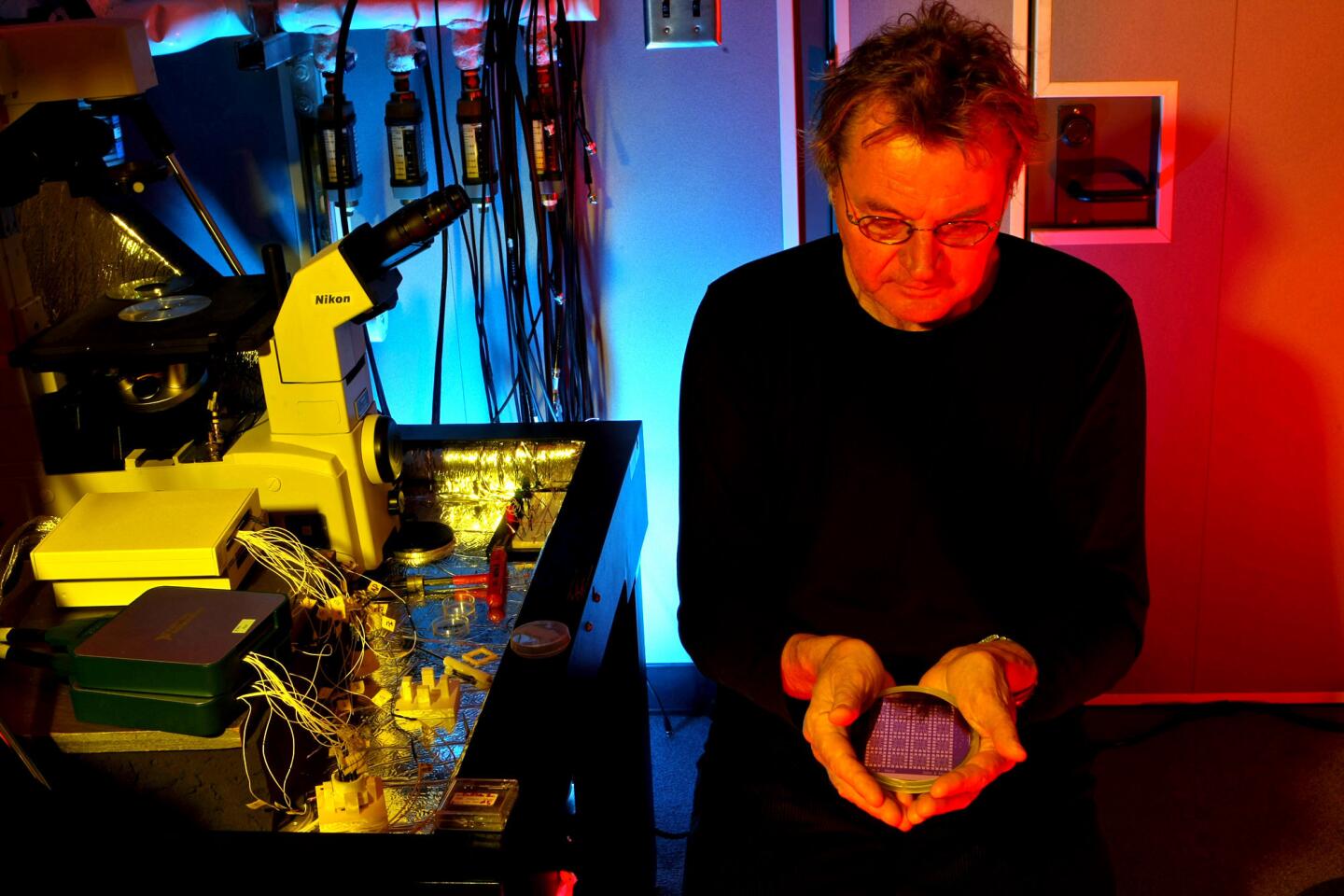
UCLA chemistry professor Jim Gimzewski holds a petri dish containing one of the chips he hopes has the computational power of the brain. (Genaro Molina / Los Angeles Times)
With an ugly tangle of wires, the chip developed by UCLA professor Jim Gimzewski is helping prove that machines can think.
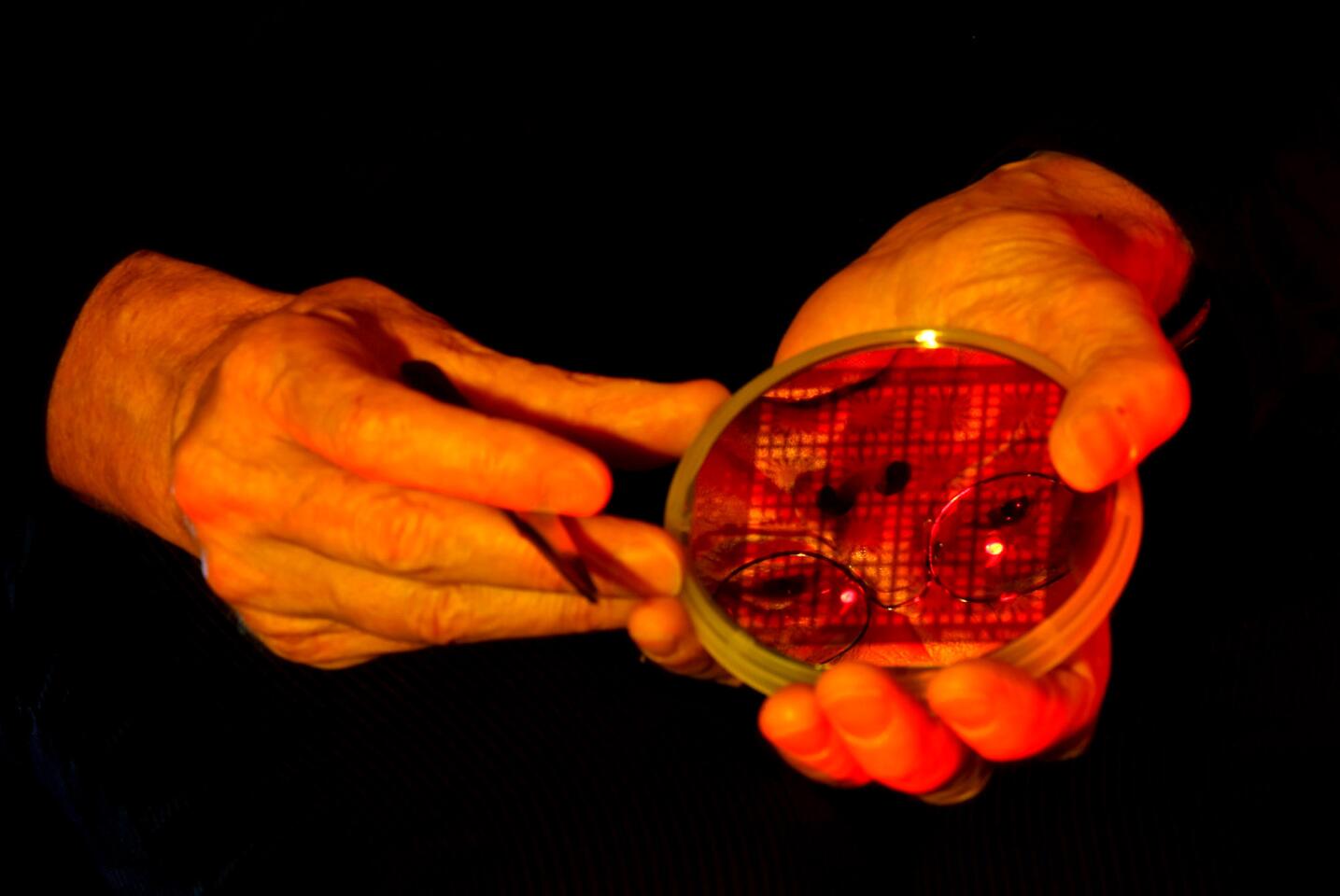
Jim Gimzewski’s reflection is captured in a petri dish containing one of his chips. It was made by placing a series of copper wire posts, mounted on a silicon wafer, into a solution of silver. As the copper dissolved, the silver formed intricate hair-like strands, as complex as the neurons in the human cortex. (Genaro Molina / Los Angeles Times)
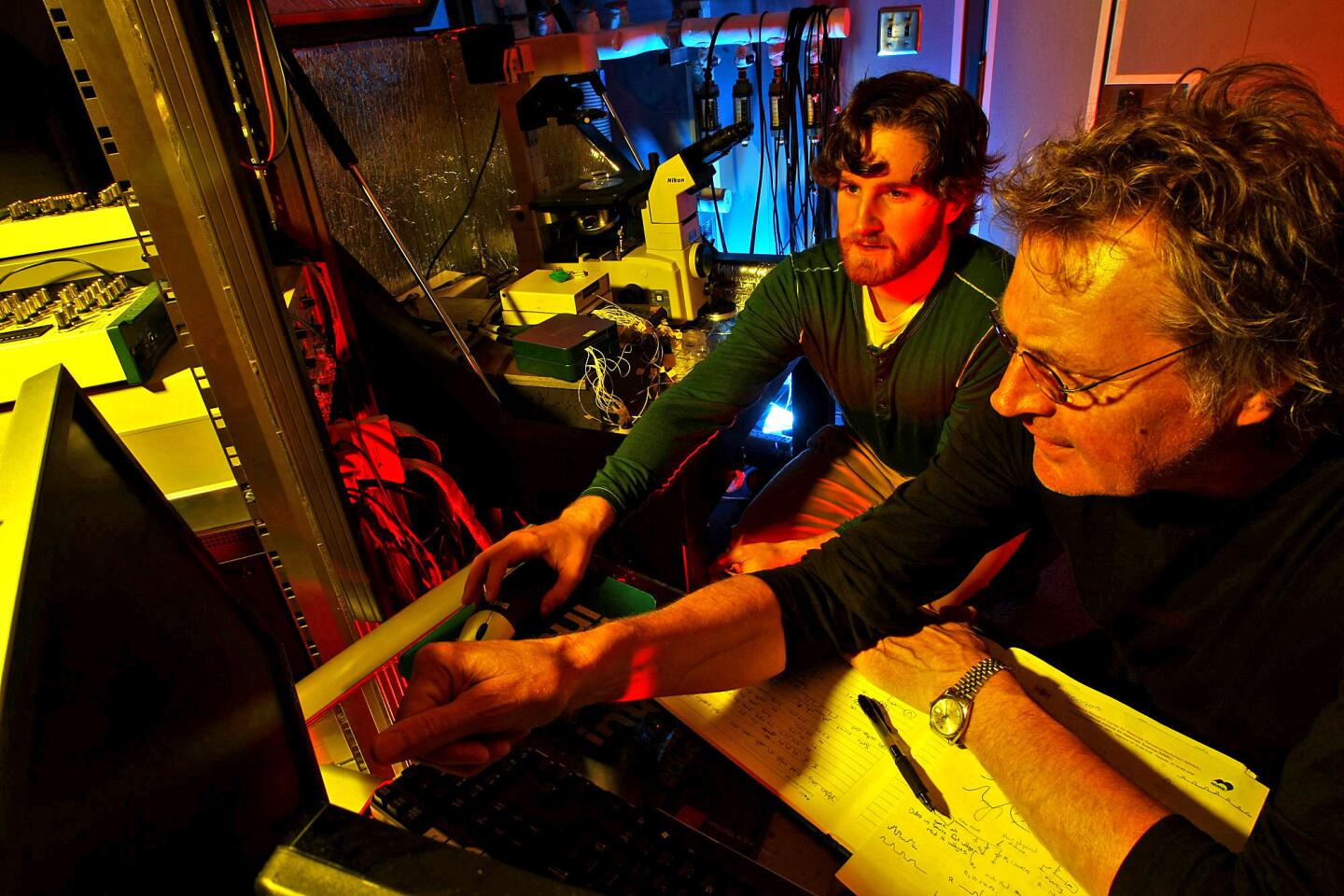
Jim Gimzewski, right, works in his lab at UCLA with graduate student Henry Sillin. “We’re operating somewhere between chaos and order, somewhere on the edge of chaos,” Gimzewski says. (Genaro Molina / Los Angeles Times)
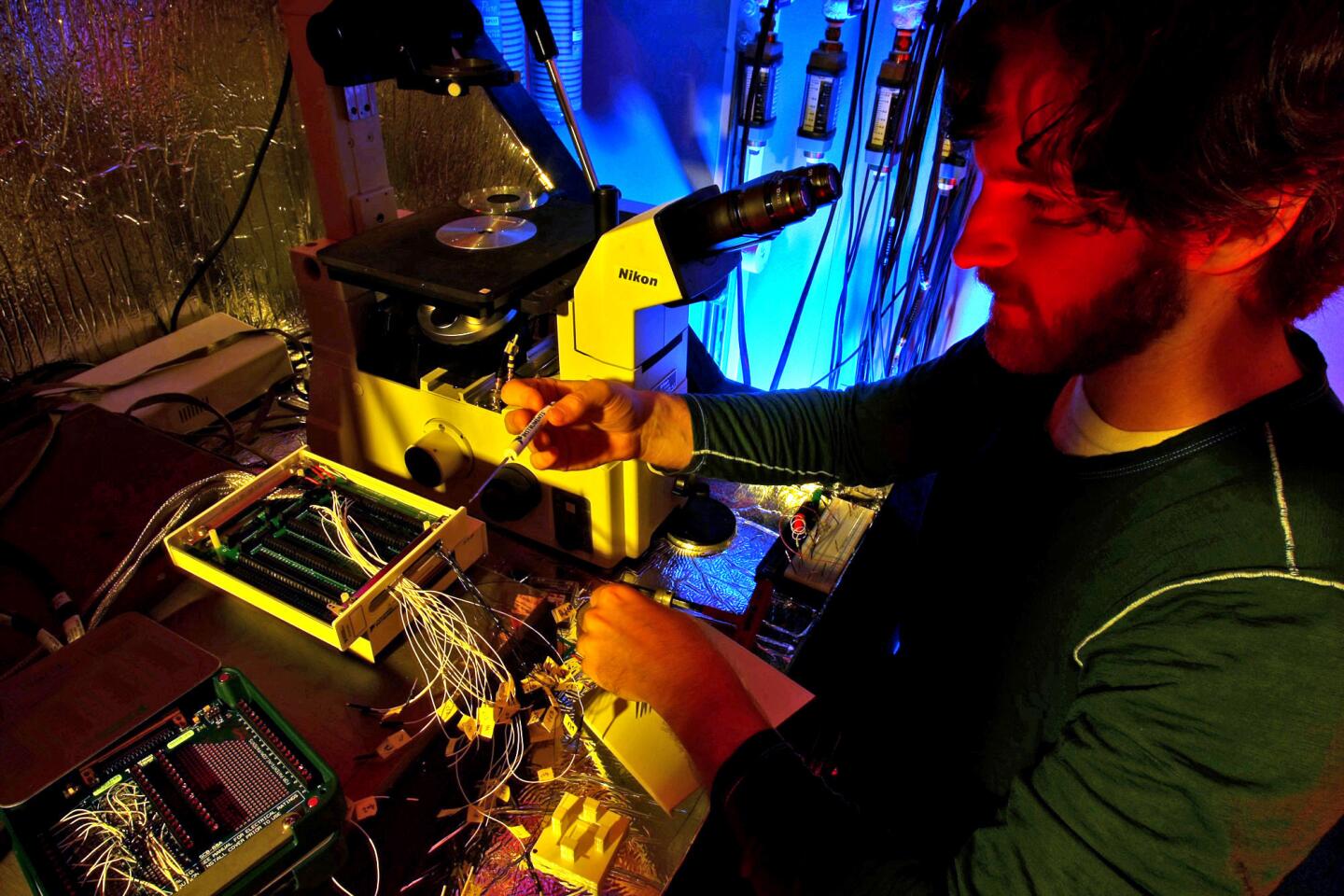
Henry Sillin, a fourth-year graduate student in physical chemistry at UCLA, sits at the “Faraday cage,” which is part of the equipment used to test the chip. “We should have walked away,” Sillin says, “but it never failed enough for us to give up.” (Genaro Molina / Los Angeles Times)
Advertisement
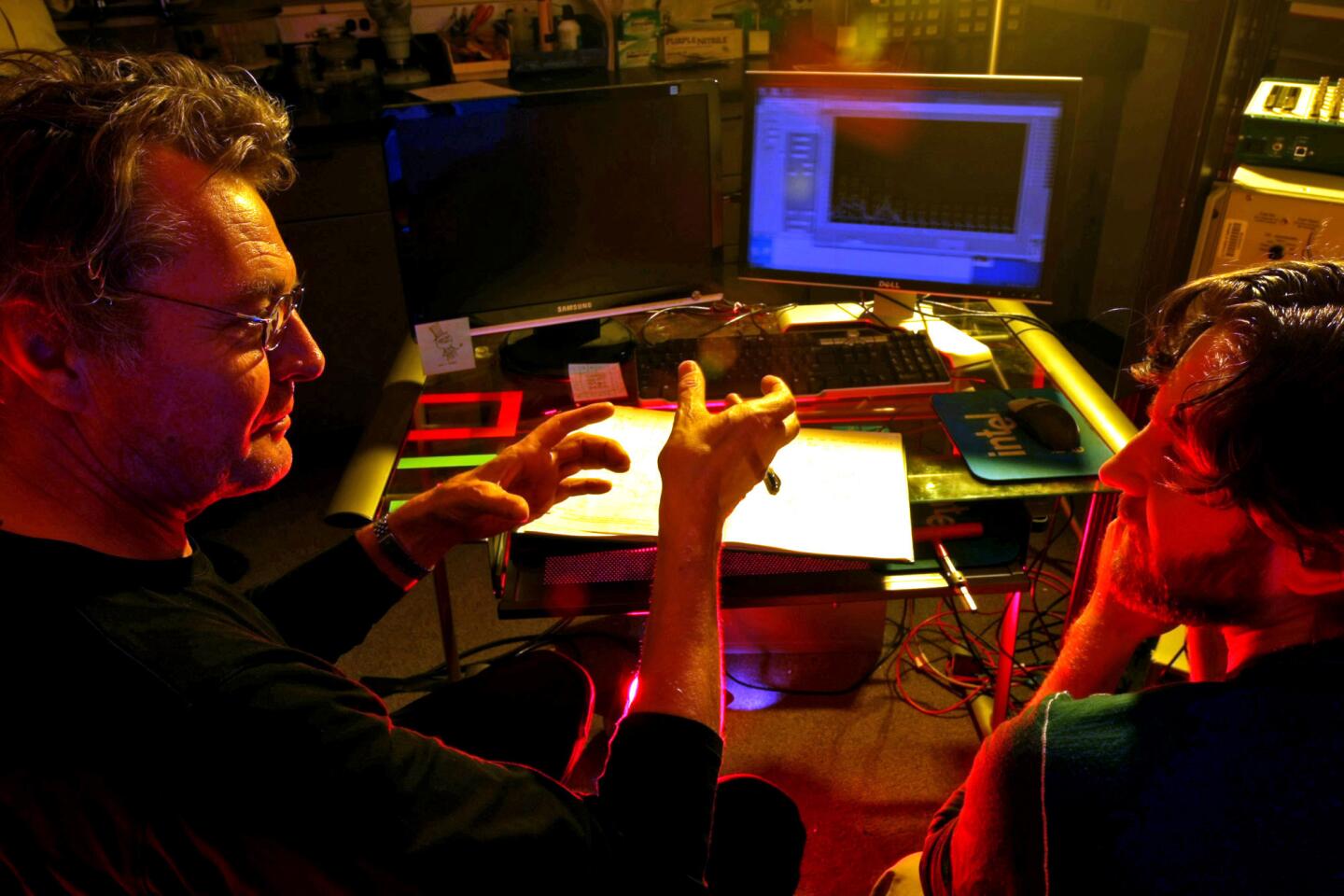
Jim Gimzewski and Henry Sillin at work in their lab. The project is funded by the Pentagon’s Defense Advanced Research Projects Agency and Japan’s National Institute for Material Science. Bart Kosko, professor of electrical engineering at USC, said the Pentagon’s backing is evidence that the research is “credible and certainly not kooky.” (Genaro Molina / Los Angeles Times)
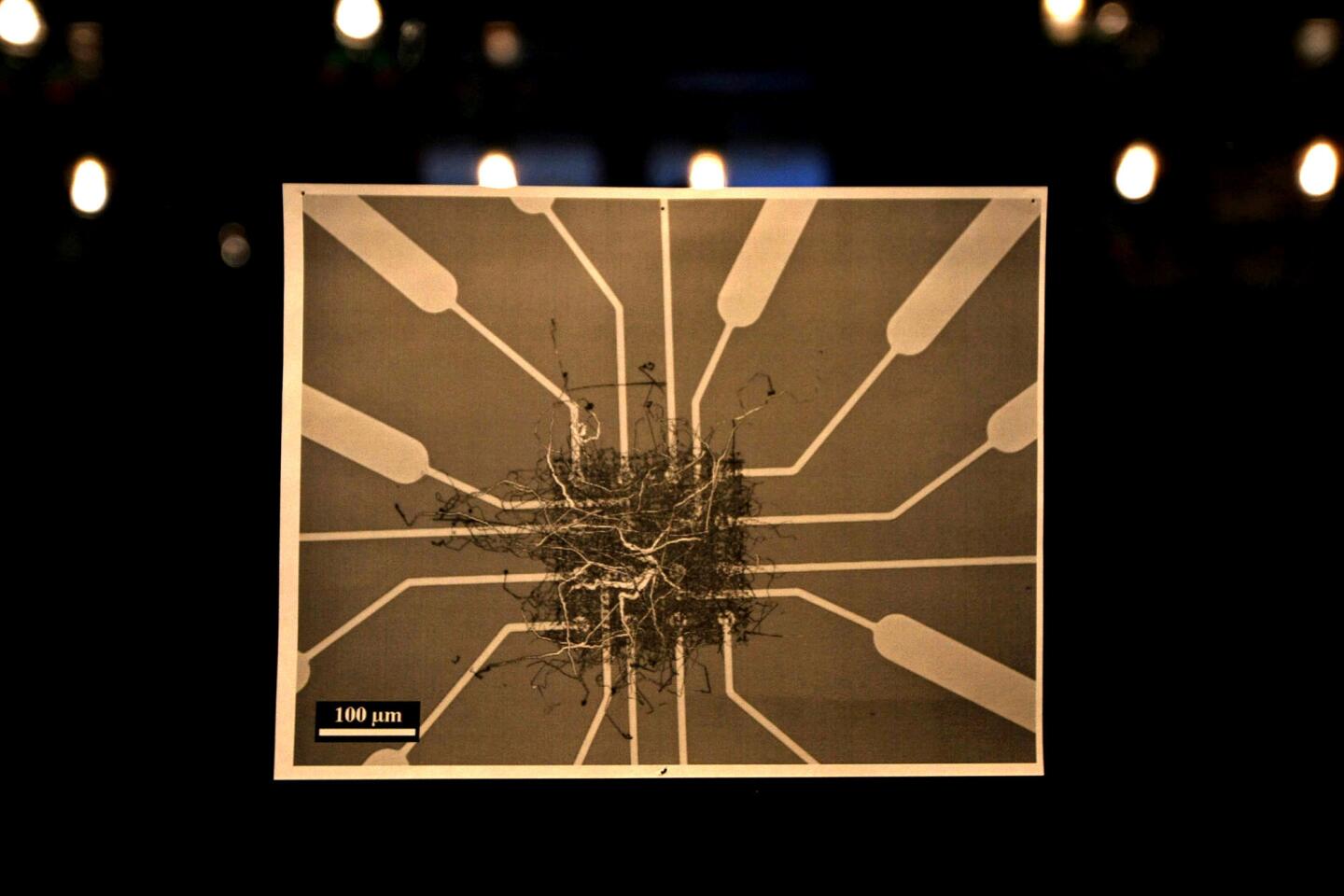
A photograph of one of Jim Gimzewski’s computer chips, taken by Henry Sillin, hangs on the wall in Gimzewski’s lab. The silicon wafer is 1-inch square, and at its center is a tangle of wires randomly crisscrossed and interwoven like hairs in a tiny dust ball. (Genaro Molina / Los Angeles Times)







